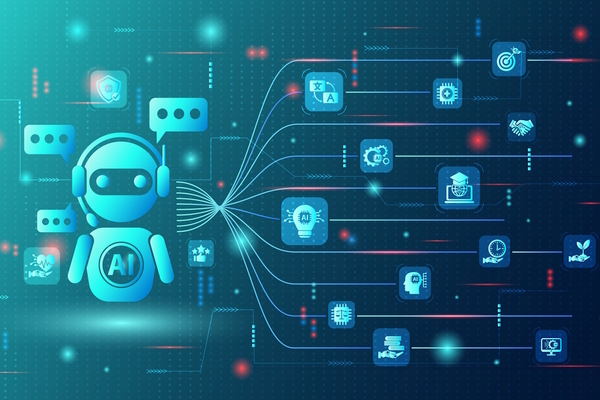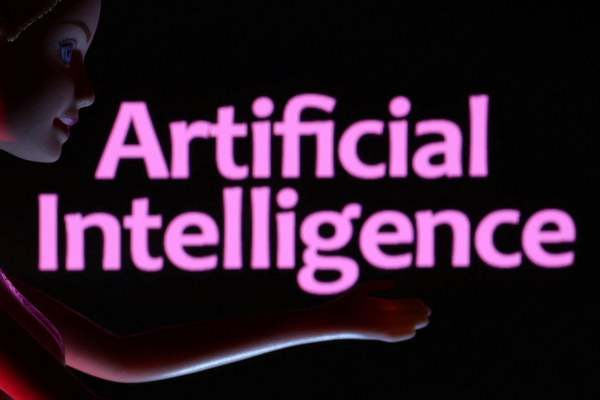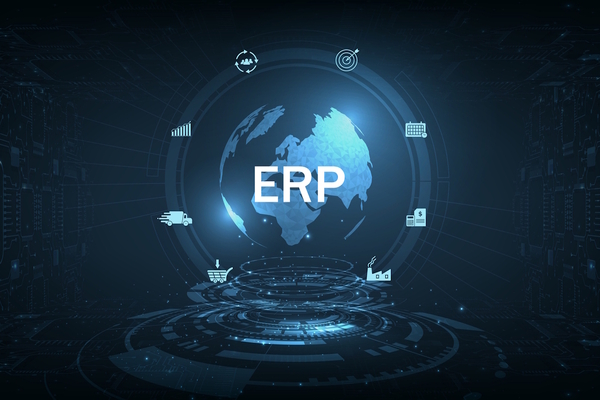Five ways GenAI can improve your business

Tristan Shortland at Infinity Group describes Generative AI’s benefits for collaboration, workflows, and decision-making
As businesses strive to improve their operations and workflows to stay competitive, transformative technology is a top consideration for investment. One transformative force shaping the future is generative AI, or GenAI. As the possibilities of artificial intelligence grow, GenAI stands out for its unparalleled adaptability, learning capabilities, and collaborative potential.
Unlocking this potential requires business leaders to engage and explore real-world use cases of the technology to understand where and how GenAI can be adopted and implemented effectively. Here are five areas that should be considered to help you get started.
1. Synergy between humans and technology
By integrating GenAI into various workflows, businesses can harness the strengths of both humans and advanced technology—a collaboration that propels productivity and innovation. GenAI tools can quickly analyse masses of data, find patterns, and suggest solutions. It enables a more natural two-way conversation between employees and technology, wherein humans contribute their creativity, judgment, and empathy, while machines accelerate and automate what were once manual processes.
GenAI does not mean the end of jobs, but it will change the function of many job roles. For example, in niche instances, where GenAI can fulfil the majority of an employee’s role, it’s far more likely that the role will evolve, with the employee becoming more of a specialist or taking on a wider remit focused on higher value tasks.
Crucially, GenAI always requires human action to provide initial prompts, so this is where we will begin to see specialist skills in demand across industries and disciplines.
2. A catalyst for content
Content creation is perhaps the most well-understood use case for GenAI. Where people often fall victim to staring at a blank page, GenAI tools can provide an outline and even generate a structure, from which users can develop their ideas. Applications vary from generating marketing collateral, such as blog posts, social posts and articles about products or services, to sales strategy, such as helping generate proposals. However, to execute these tasks effectively, a change in mindset is required.
Those who adopt GenAI tools will have to learn to understand the principles of writing a good prompt, as well as digesting and refining the answer. Users do not need to be data scientists nor possess a deep understanding of how the technology works, but they should understand the age-old adage of ‘garbage in, garbage out,’ and identify when prompts have led to inaccurate or undesirable results. Even when answers are not entirely accurate, they will likely indicate what additional information is required to refine the response.
3. Hyper-personalisation
GenAI excels in automating routine and repetitive tasks. Increased efficiency is particularly evident in areas such as data entry, customer support, and basic decision-making processes. Acting as an advanced decision support tool, users can harness GenAI tools to explore multiple scenarios and then select the most effective one.
This process can be used to create hyper-personalised experiences for customers after analysing customer data, preferences, and behaviour to help tailor products and services accordingly. This level of personalisation enhances customer satisfaction and fosters brand loyalty, driving long-term business success. It also helps sales and marketing teams to create more personalised pitches and campaigns.
4. Cyber-security threat detection
According to government research, 69% of large businesses experienced some form of cyber-attack in 2023. A company’s weakest link is often its workforce and employees’ susceptibility to increasingly advanced phishing schemes. This is where GenAI tools can also help.
Imagine a large financial institution facing an increasing number of sophisticated cyber-attacks. Traditional cyber-security systems struggle to keep up with the evolving attack methods. By employing natural language processing and machine learning, GenAI can detect anomalies in user behaviour and network activities, providing early threat detection and reducing false positives.
By learning from historical data and staying updated on emerging threats, GenAI enhances cybersecurity measures, proactively protecting businesses against cyber-attacks.
5. Risk mitigation and compliance
In industries where compliance and risk are paramount, GenAI is a treasured resource. Much like monitoring systems for potential anomalies that may indicate a cyber-attack, GenAI tools can also analyse user behaviour that may compromise compliance, such as poor data governance and data sharing practices. Again, this delivers a more proactive risk mitigation posture, helping organisations remain compliant and secure.
The adoption of Gen AI transcends mere technological advancement; it represents a strategic imperative for businesses aiming to stay competitive in today’s rapidly changing world. As businesses continue to navigate the complexities of the evolving technology landscape, embracing Gen AI is not merely an option but a necessity for those seeking to thrive.
Tristan Shortland is Infinity Group’s Chief Innovation Officer
Main image courtesy of iStockPhoto.com

Business Reporter Team
Most Viewed
Winston House, 3rd Floor, Units 306-309, 2-4 Dollis Park, London, N3 1HF
23-29 Hendon Lane, London, N3 1RT
020 8349 4363
© 2025, Lyonsdown Limited. Business Reporter® is a registered trademark of Lyonsdown Ltd. VAT registration number: 830519543





